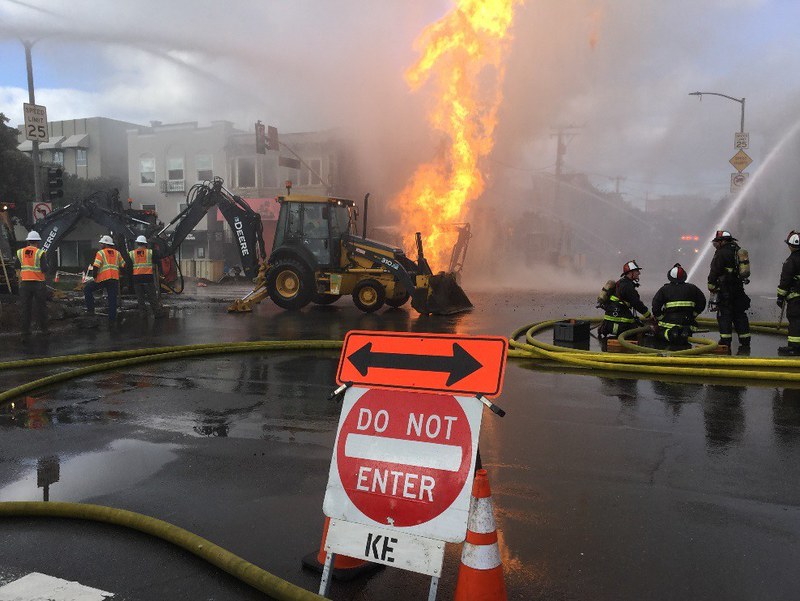Safe Procedure Failure Led to Natural Gas Release, Fire in San Francisco Neighborhood
Kilford Engineering Inc.’s excavation crew’s failure to follow safe excavation practices near a pipeline contributed to a 2019 natural gas release and fire in a San Francisco neighborhood, the National Transportation Safety Board determined through an investigation.

The National Transportation Safety Board (NTSB) issued Pipeline Accident Report 21-02 on Tuesday, which reveals failure of Kilford’s crew to follow safe excavation practices within the area surrounding Pacific Gas & Electric Company’s 4-inch natural gas distribution pipeline, caused the excavation backhoe to strike a pipeline branch connection.
The accident occurred during excavation for fiberoptic conduit in a residential neighborhood in San Francisco. There were no injuries or fatalities. About 100 people were evacuated from the area.
“This accident shows there are rules and procedures in place to ensure safe excavation; however, in this case, the construction crew chose not to abide by them,” said Robert Hall, Director of the NTSB’s Office of Railroad, Pipeline and Hazardous Materials Investigations. “Consequently, the crew conducted mechanical excavation too close to the pipeline without taking the proper precautions first to make sure the area was safe to execute the dig.”
The NTSB’s investigation revealed there was a 50-minute delay in identifying the locations of specific valves required to be closed to stop the flow of gas after the pipeline was damaged. Natural gas fires cannot be safely extinguished until the source is isolated, so the 50-minute delay extended the time the fire burned and increased the safety risk to the neighborhood. Had PG&E incorporated detailed location information into the software program used to develop its valve isolation plan before this accident, it would have reduced the time to isolate the natural gas release.
The NTSB’s report also states that during the post-accident response, the PG&E gas mechanic’s response to the scene was delayed by traffic. The PG&E supervisor asked for a police escort from a nearby police officer, but that request was denied. This request for a police escort should have been made by PG&E headquarters to 911 dispatch. The lack of a police escort ultimately did not affect the timeliness of the fire being extinguished. However, the NTSB concluded PG&E did not follow its own procedures regarding requests for police escorts.
The report also states California did not have an excavation damage enforcement program at the time of the accident and missed an opportunity to identify and deter poor safety activities presented by the contractor. Enforcement is important for preventing third-party damage to buried utilities. The NTSB’s report notes that since the accident, California’s newly created Dig Safe Board has begun enforcement of damage prevention laws.
Based on the results of its investigation the NTSB issued three safety recommendations; one safety recommendation issued to San Francisco emergency response agencies and two safety recommendations issued to PG&E. The safety recommendations address PG&E’s data integration gaps and insufficient joint emergency response planning between PG&E and San Francisco emergency response agencies.
Related News
Related News

- Keystone Oil Pipeline Resumes Operations After Temporary Shutdown
- Freeport LNG Plant Runs Near Zero Consumption for Fifth Day
- Biden Administration Buys Oil for Emergency Reserve Above Target Price
- Mexico Seizes Air Liquide's Hydrogen Plant at Pemex Refinery
- Enbridge to Invest $500 Million in Pipeline Assets, Including Expansion of 850-Mile Gray Oak Pipeline
- Evacuation Technologies to Reduce Methane Releases During Pigging
- Editor’s Notebook: Nord Stream’s $20 Billion Question
- Enbridge Receives Approval to Begin Service on Louisiana Venice Gas Pipeline Project
- Mexico Seizes Air Liquide's Hydrogen Plant at Pemex Refinery
- Russian LNG Unfazed By U.S. Sanctions




Comments